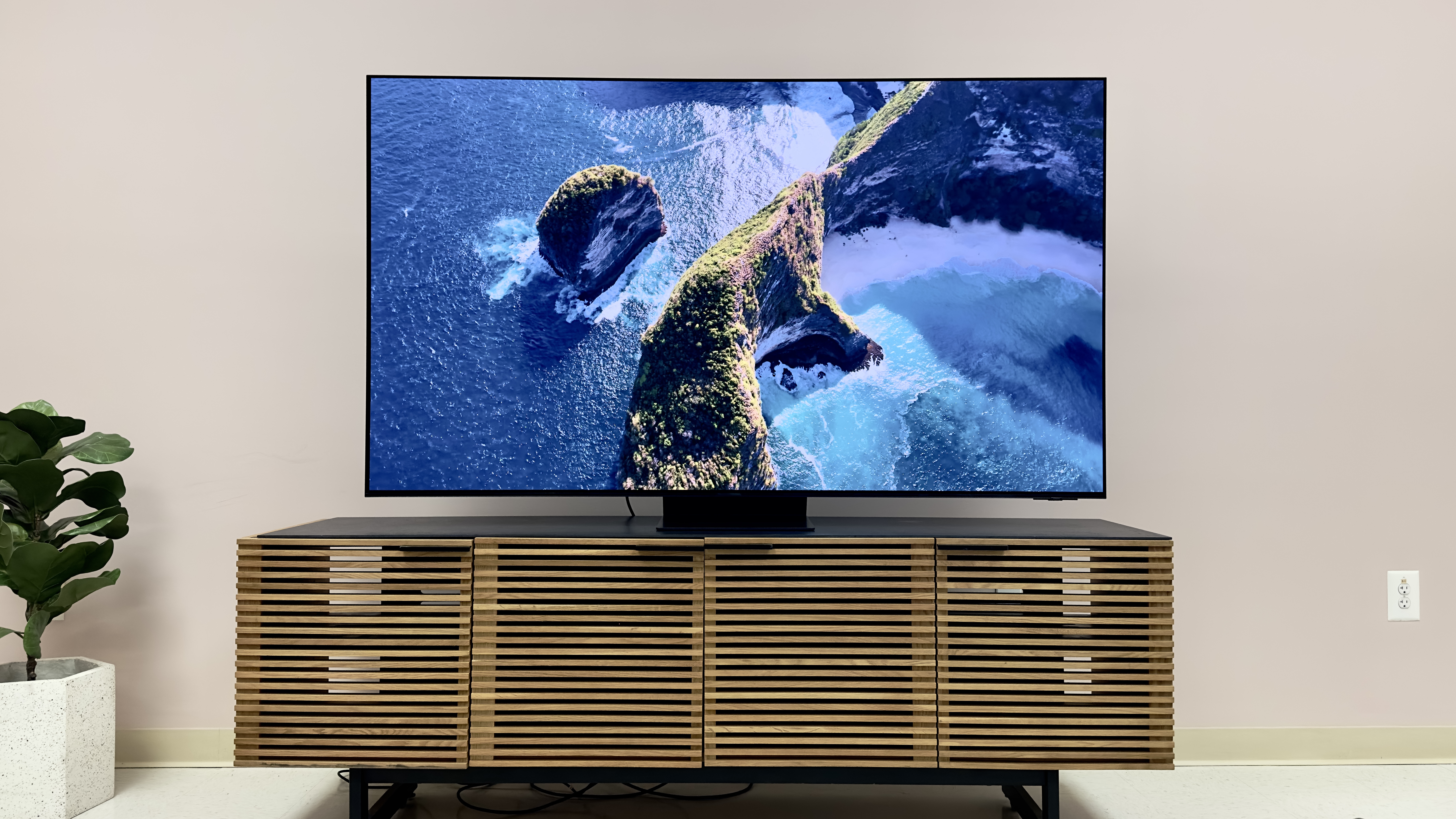
Samsung's QN900C Neo QLED 8K TV perfectly encapsulates the South Korean company's approach to flagship products, in that it's so stacked with features, some may see it as bordering on overkill.
While other manufacturers have mostly abandoned 8K TV production due to slow adoption from consumers and tighter energy regulations in the EU, Samsung is (for now) refusing to budge, delivering its most advanced 8K television to date in the QN900C.
Here's a TV that doesn't hold back on anything, opting instead to try and give you everything you could possibly want in a flagship set and then some. And, aside from its lack of Dolby Vision support, it pretty much succeeds.
Want high peak brightness? Samsung's delivered a TV that could inspire you to wear sunglasses indoors. Looking for the ultimate gaming setup with full HDMI 2.1 support? You'd be hard-pressed to find a more robust set of gamer-centric features anywhere else. What about top-notch upscaling, excellent black levels, stunning colors and immersive in-built sound? Tick, tick, tick and tick.
Maybe you're looking for a central hub that's smart enough to control your whole household. If so, the QN900C has you more than covered, boasting Bixby and Alexa voice assistant support, along with a plethora of SmartThings features that cleverly take advantage of other connected products within Samsung's ecosystem.
Combine this with an unrivaled design approach that offers near-invisible bezels and the return of Samsung's celebrated One Connect box, and the QN900C feels about as deluxe as TVs get.
Ultimately, the real deciding factor for most people will be whether QN900C's 8K resolution is worth paying top dollar for — especially when Samsung itself offers a 4K equivalent in the QN90C Neo QLED 4K TV for thousands of dollars less (albeit without a One Connect box).
Of course, if you're unwilling to settle for anything but the most premium TV Samsung has to offer, chances are you'll be blown away by the QN900C. Not only is it one of the best gaming TVs we've tested, it's one of the best TVs of 2023, period.
Samsung QN900C Neo QLED 8K TV review: Pricing and availability
Samsung's QN900C Neo QLED 8K TV is the company's flagship television for 2023, and as you'd expect, it doesn't come cheap. Available in 65-, 75- and 85-inch models, the QN900C starts at $4,999 / £5,099 / AU$6,499 for the 65-inch version and tops out at $7,999 / £9,599 / AU$10,999 for the 85-inch variation. US, UK and Australian pricing for the full QN900C lineup can be found below:
- Samsung QN900C 65-inch: $4,999 / £5,099 / AU$6,499
- Samsung QN900C 75-inch: $6,299 / £6,799 / AU$8,499
- Samsung QN900C 85-inch: $7,999 / £9,599 / AU$10,999
For the purposes of this review, we were sent the largest Samsung QN900C Neo QLED 8K TV model (85-inch) to test, and we expect the 65- and 75-inch models to offer a near identical viewing experience.
Samsung QN900C Neo QLED 8K TV review: Design
As we've come to expect from Samsung's QN900 series, the QN900C Neo QLED 8K TV is without peer in terms of industrial design, continuing everything we loved in the previous iterations while providing a few additional refinements.
The first thing you're likely to notice is that the QN900C maintains the striking bezel-free 'Infinity Display' design that was introduced with the QN900A back in 2021, and it's every bit as dramatic now as it was then.
With only the most minimal black line present to distinguish the display from the millimeter-thick speaker grilles surrounding it, there's nothing to distract you from whatever content you might be watching. This zero-bezel design is also the additional wow factor that gives the QN900C a significant design edge over Samsung's own S95C OLED TV, which does have a noticeable bezel.
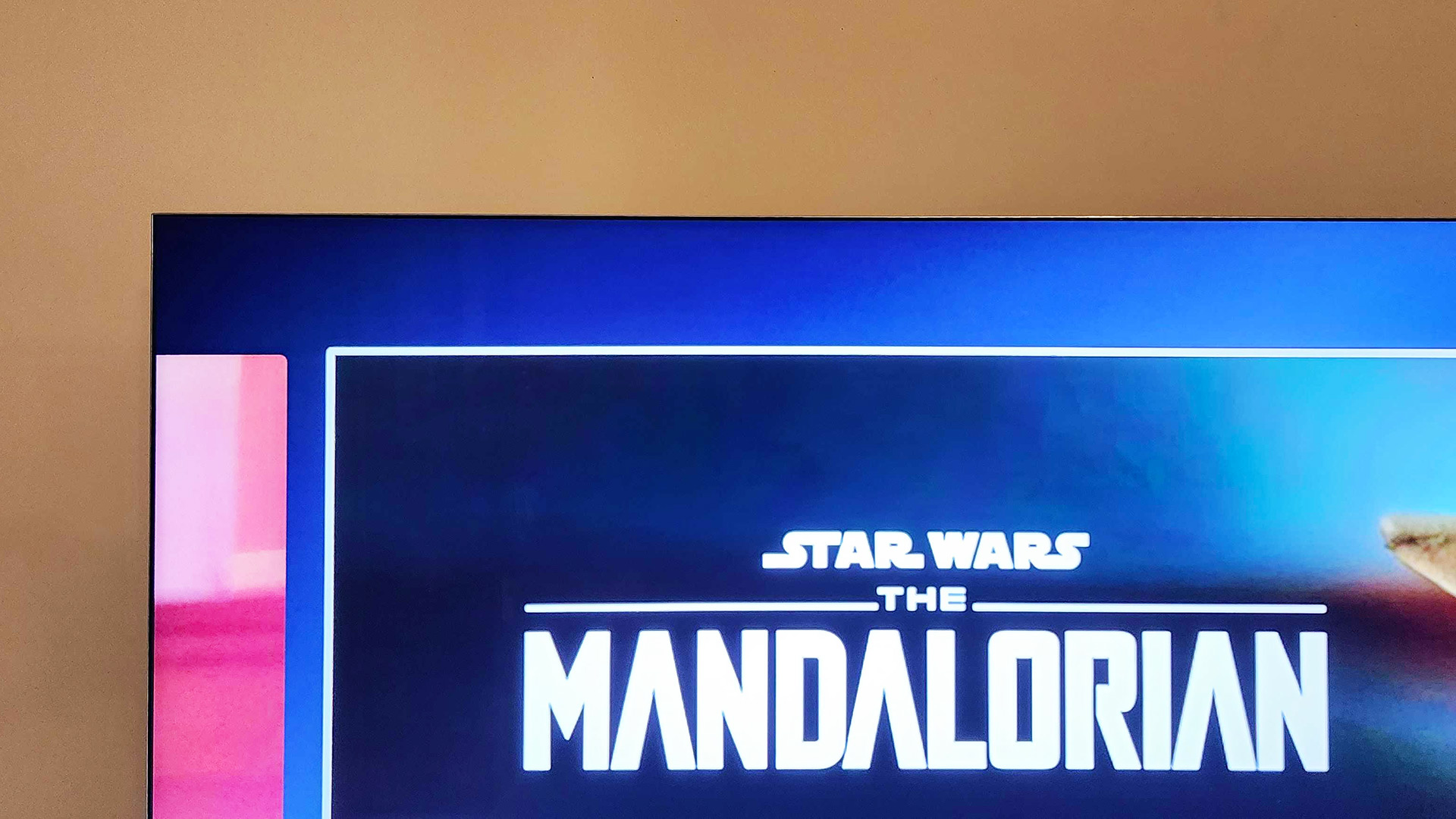
Speaking of speaker grilles, the QN900C has updated them slightly from last year — the grilles themselves are now dark gray rather than their previous silver, and Samsung has realigned the diagonal pill-shaped holes seen last time in favor of straight ones. Once again, the QN900C's speakers run along the top and side edges of the display and aren't visible when the TV is viewed front-on.
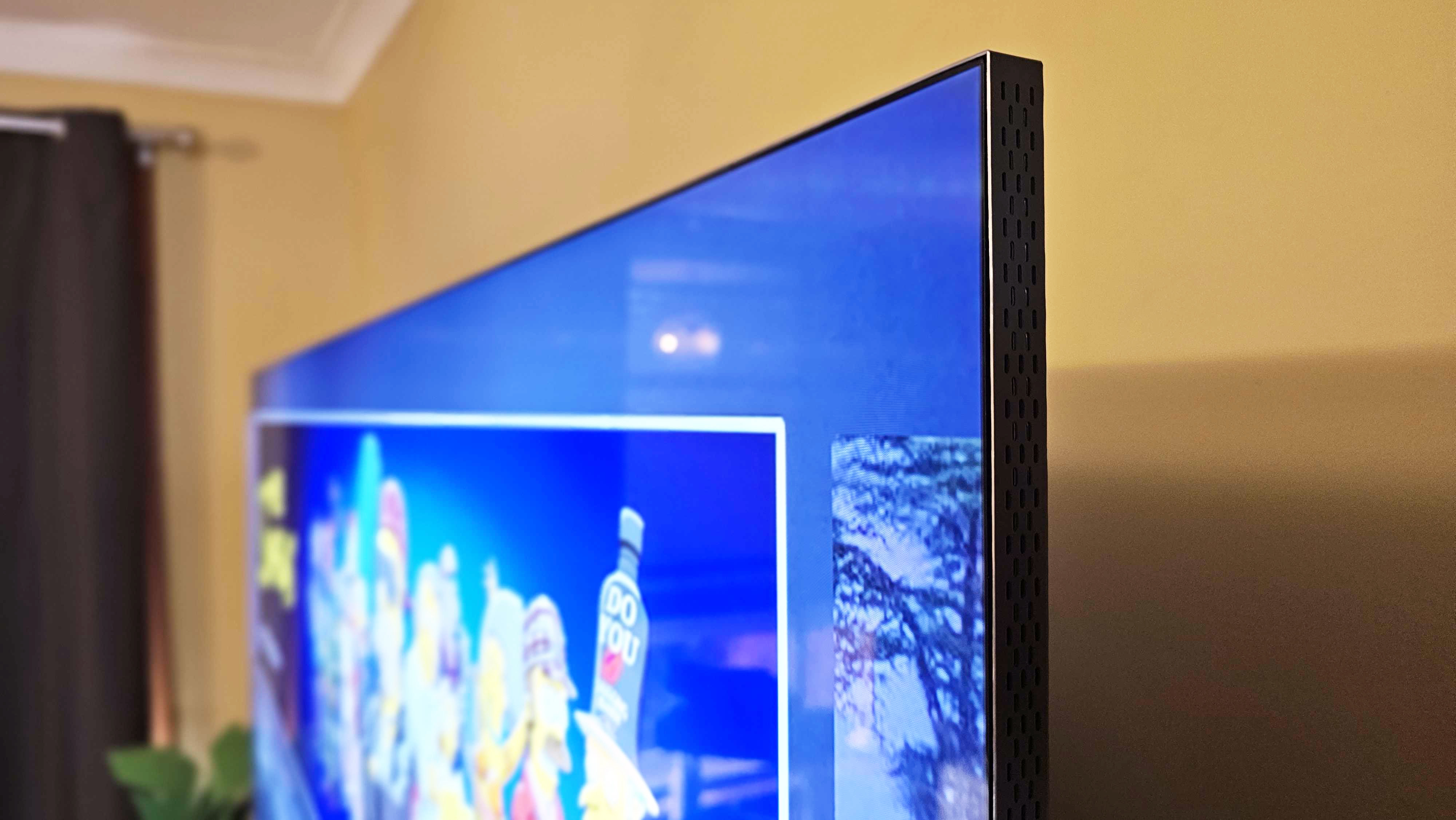
Like its predecessors, the QN900C sits on a centered stand with a flat base, only this time it's gone from silver on the previous two models, to matte black. It's a small aesthetic change that ups the QN900C's style in our book.
Additionally, Samsung has cleverly designed the QN900C's packaging to allow you to attach said base while the TV stands upright in its box, which is much appreciated for a set of this size and heft (the 85-inch model weighs 125.663 lbs / 57kg with stand and 96 lbs / 43.7kg without).
Samsung's detachable One Connect box also returns, providing users with a media receiver of sorts which can either be slotted onto the QN900C's stand or tucked away in a TV cabinet for easy access.
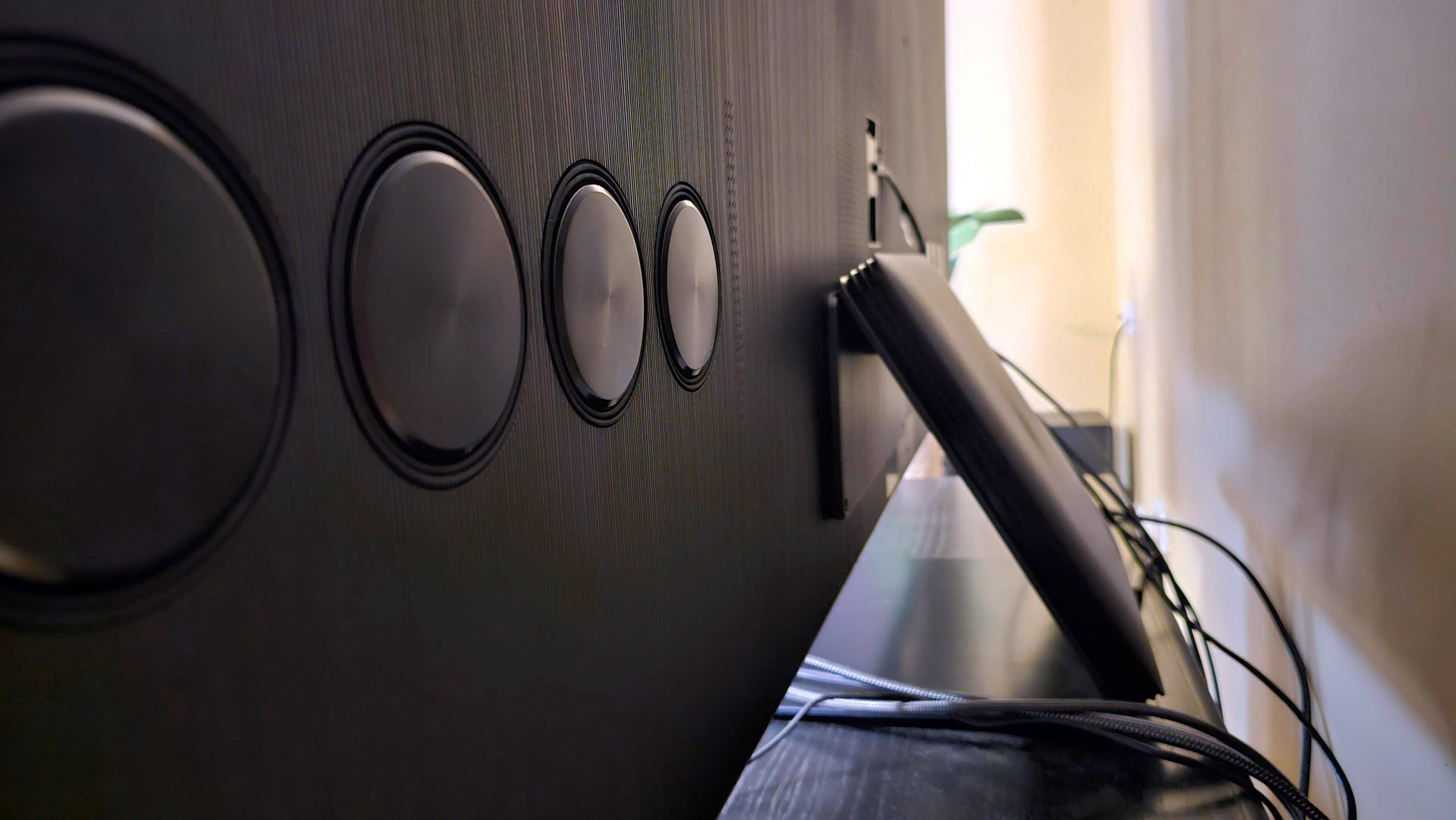
Like before, the One Connect box holds four HDMI 2.1 ports (with eARC support on HDMI 3), three USB (Type-A) ports, an ethernet (LAN) port, a Digital Audio Out (Optical) port, an RF input for your antenna or satellite box, and a proprietary One Connect cable output which is the only connection going directly to the actual screen.
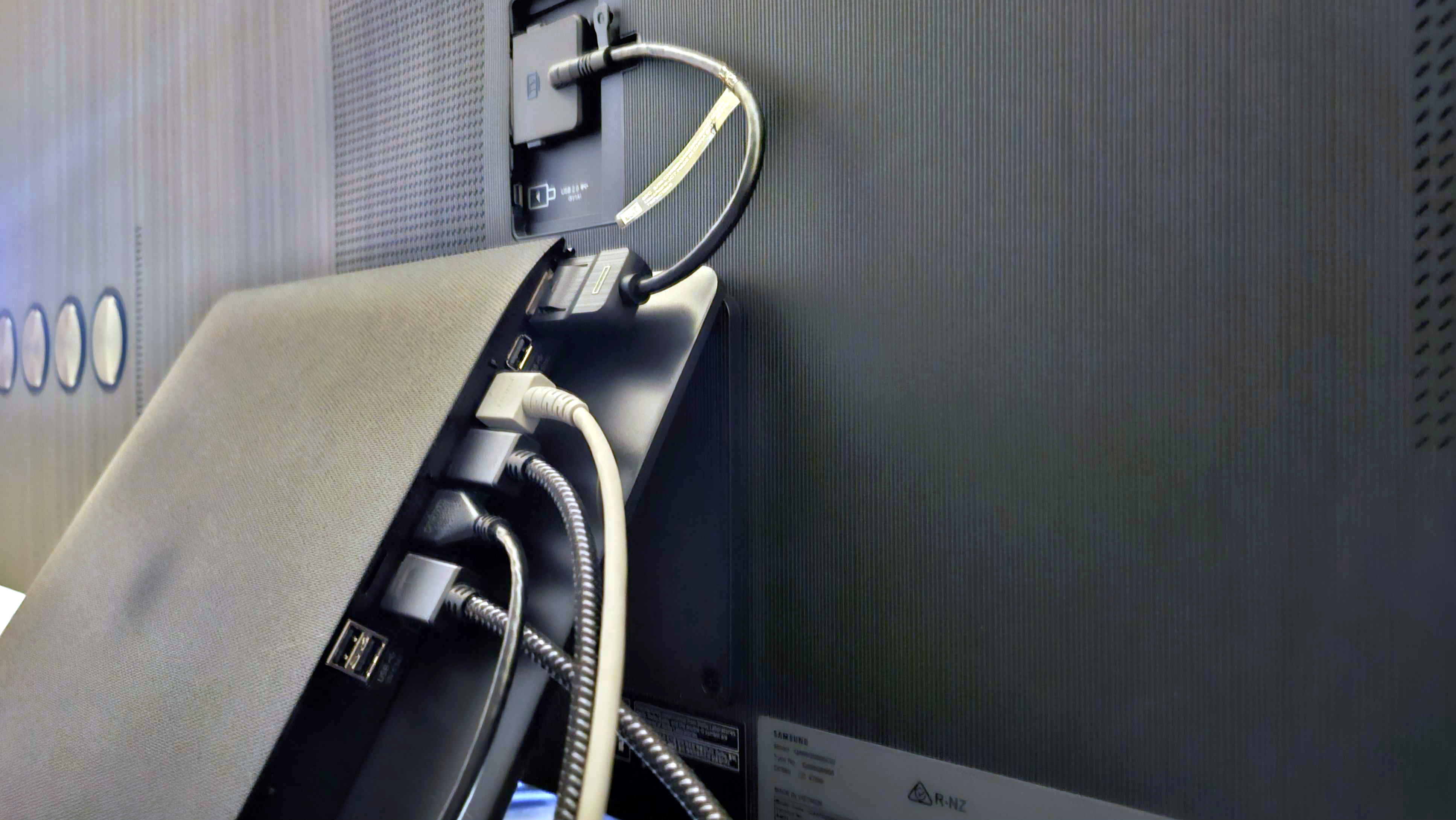
In terms of the QN900C's dimensions, the panel on our 85-inch model is 73.9 x 42.2 x 0.6 inches / 1,876.6 x 1,071.5 x 15.4 mm (W x H x D) on its own and 73.9 x 45.1 x 12 inches / 1,876.6 x 1,146.8 x 303.7 mm with stand attached.
On the back of the QN900C, you'll also find four M8-sized screw holes for use with standard VESA wall mounts, as well as two additional screw holes at opposite ends of the TV for use with Samsung's Slim Fit (or No Gap) wall mounts.
Thanks to the aforementioned detachable One Connect box, the QN900C sports the same depth all the way across its body, avoiding the chunky section at the bottom that most other TVs have on their rear. That means less of a gap when wall mounting.
Samsung QN900C Neo QLED 8K TV review: Performance
With the introduction of its Mini LED-sporting Neo QLED range back in 2021, Samsung's goal was to achieve near-OLED black levels without falling prey to that technology's drawbacks — namely, its lack of brightness and its burn-in susceptibility. Well, those are two things you'll never have to worry about with regards to Samsung's QN900C Neo QLED 8K TV.
Firstly, Mini LED TVs don't use organic compounds in their displays, so there's no risk of burn-in. And secondly, the QN900C achieved the highest peak brightness of any TV we've tested in recent memory, reaching a peak luminance of 2,433.6 nits in a 10% window, far exceeding Samsung's own S95C OLED (1374.3 nits) and leaving LG's C2 OLED (794 nits) stranded in the Dark Ages.
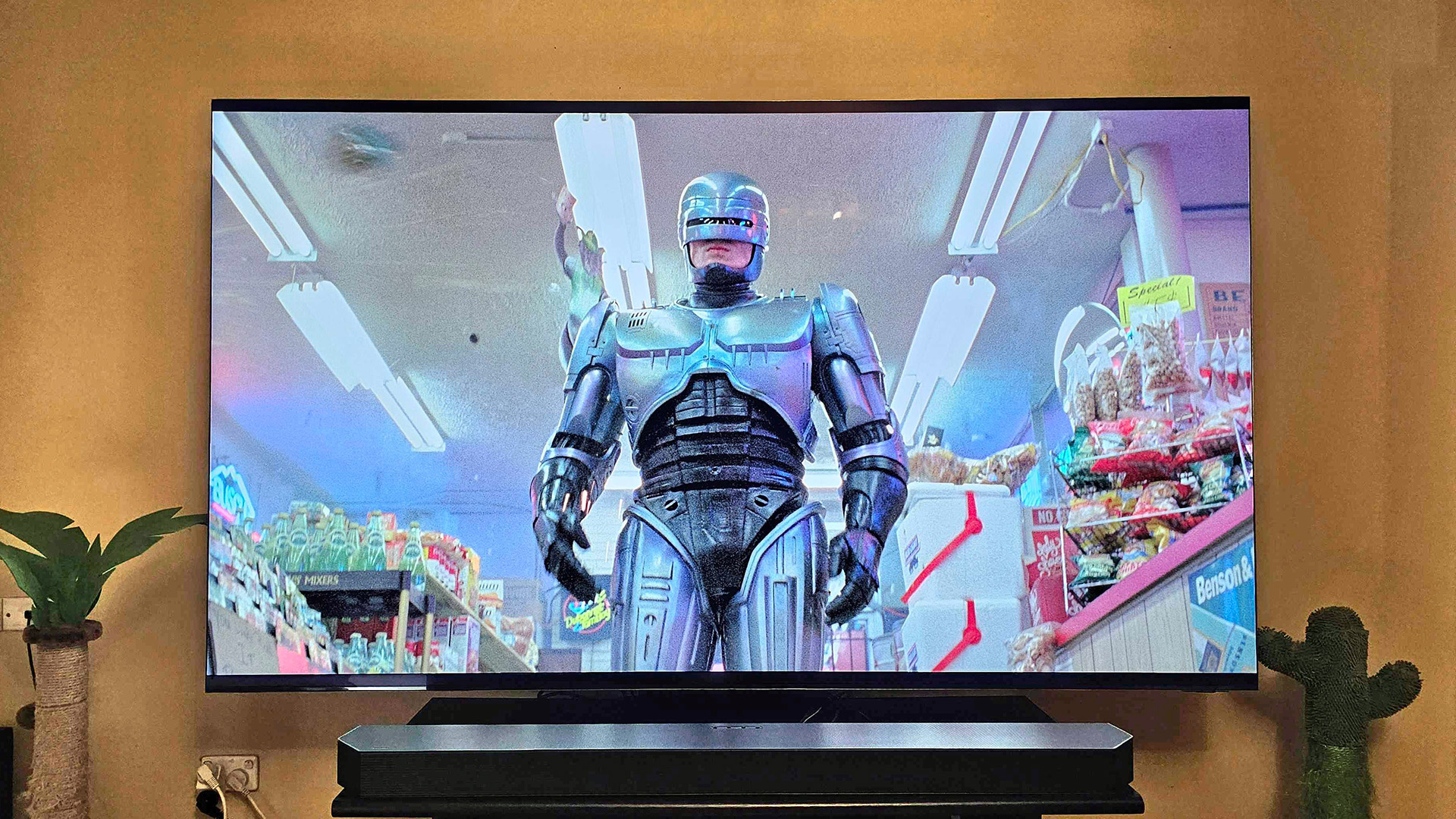
While 2021's QN900A could deliver excellent contrast more often than not, it would also overcompensate in low-light situations, making it seem like a spotlight is following the brightest objects across the screen. Occasionally, the TV would even artificially brighten shadowy faces, making some movies look like Kabuki theater as a result.
Thankfully, last year's QN900B already offered a noticeable improvement over its predecessor with regards to backlight control, and the QN900C pushes these advancements even further, taking full advantage of over 1,000 dimming zones.
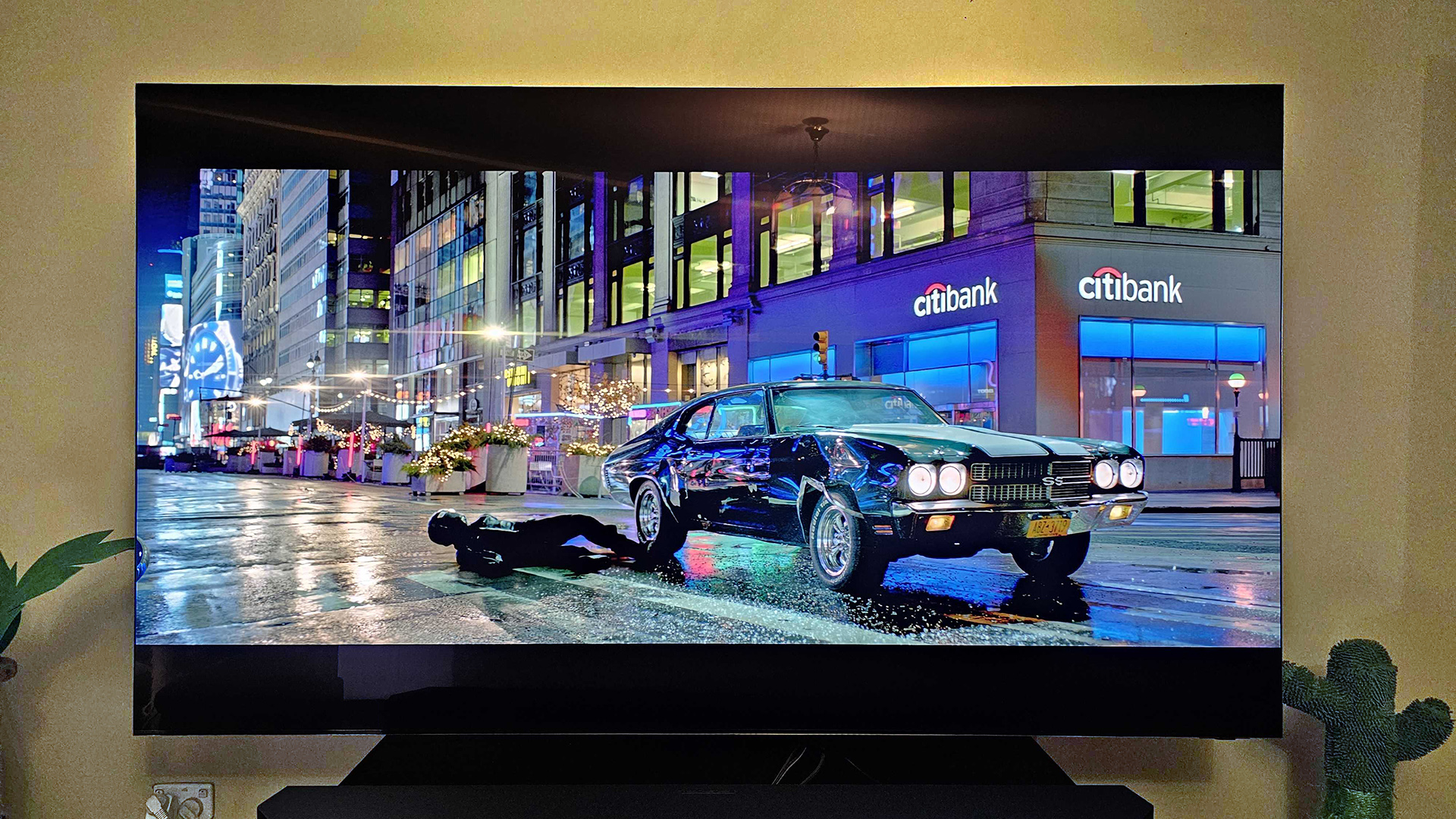
Having spent a few weeks with Samsung's QN900C Neo QLED 8K TV, this reviewer hasn't encountered any real instances of overzealous backlighting. Outside of a slight glow around Netflix's red 'loading' ring, the new flagship exhibits a more delicate hand when it comes to lighting dark scenes.

While the QN900C's more subtle approach to backlighting effectively decreases light blooming, there is a slight trade-off that involves the introduction of black crush, leading to some loss of detail in very dark scenes. In some instances, movies watched using the TV's default Filmmaker Mode settings almost tipped into the realm of German expressionism.
Thankfully, this can be alleviated for HDR content by switching from 'Static' to 'Active' tone mapping in the QN900B's 'Expert' picture settings. For non-HDR content, black clipping can be reduced somewhat by pushing the TV's 'Shadow Detail' slider (also found under Expert settings) all the way up.
In terms of color saturation, Samsung's quantum dot-sporting Neo QLED range is known for its vibrancy, and the QN900C continues to live up to that reputation. For SDR content, the QN900C covers 99.13% of the Rec709 Color Gamut in Filmmaker Mode, while HDR content sees 93.04% coverage of the UHDA-P3 Color Gamut — slightly less than the 99.18% that Samsung's own S95C QD-OLED is capable of.
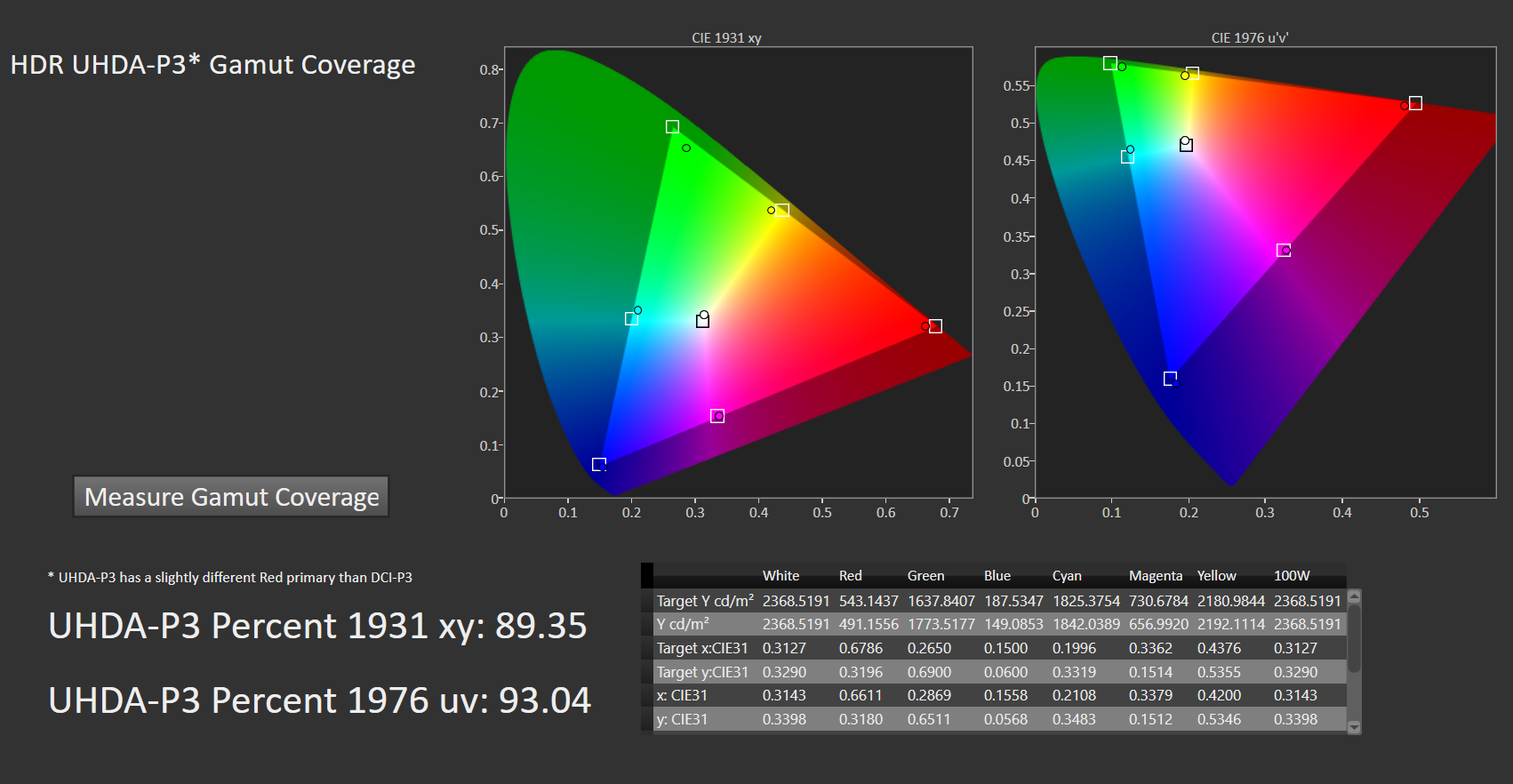
As for color accuracy, the QN900C measured a very respectable 2.8686 in our Delta-E test, where lower numbers are favored, putting it at a significant advantage over the aforementioned S95C, which measured 4.0946.
More often than not, the biggest criticism leveled against 8K televisions is that native 8K content is incredibly rare, making the need for such high resolutions totally unnecessary. This stance has always baffled this reviewer — it should be known that 8K has never been about native content, but rather upscaling for larger screen sizes. Obviously, a 4K image displayed on an 8K screen will result in doubling the pixel density per inch. From here, it's up to the TV's upscaling prowess to then display said image as cleanly as possible.
As you might expect from Samsung's top TV model, picture quality is astonishing. For the 85-inch model we're reviewing (and the 75-inch model), much of this can be attributed to the Neo Quantum HDR 8K Pro processor that powers it (the 65-inch version uses a slightly less powerful Neo Quantum HDR 8K+ chipset).
Taking advantage of AI and neural networks, along with 14-bit processing capabilities, the Neo Quantum HDR 8K Pro is able to analyze and improve image quality at a pixel-by-pixel level. Obviously, quantifying this claim is more than a little tricky, suffice to say that upscaled 4K (and even Full HD) images appear cleaner and less noisy than last year's already-impressive QN900B.
For more see how we test and review TVs.
Of course, you will have to do some tweaking of settings to get Samsung's QN900C looking its best — by default, the TV's 'Intelligent Mode' is switched on, which horrifyingly limits its viewing modes to ones with aggressive motion smoothing and auto dimming.
Before you allow a wave of sheer panic to crash over you, please know that toggling this mode off will bring back Filmmaker Mode and other, more natural viewing options.
Before we move on to audio, two more things regarding the viewing experience. Firstly, off-axis viewing is exceptional on the QN900C, with seemingly no drop-off in color or brightness noticed by this reviewer — even when viewed from side on. And finally, though the QN900C sports an anti-glare layer, noticeable reflections from sunlight and indoor lighting were still regularly present — especially during dark scenes. Thankfully, the TV's extreme brightness does a great job of muting glare the rest of the time.
Samsung QN900C Neo QLED 8K TV review: Audio
Samsung's QN900C offers a fairly full-bodied set of built-in speakers, with a 6.2.4-channel system (that's 12 speakers, folks) working in tandem with Samsung's Object Tracking Sound Pro tech to provide audio that qualifies as Dolby Atmos — even if its 90W output probably won't have you ducking from virtual overhead objects.
Of course, the real audio-related magic happens when the QN900C is paired with a Q-Symphony-compatible soundbar, which the TV's speakers will sync with and support.
For the purposes of this review, Samsung provided us with its flagship Q990C Q-Series soundbar in order to test the QN900C's Q-Symphony functionality, and we've come away mightily impressed.
Switching the QN900C's sound output setting to TV+Soundbar Q990C (HDMI-eARC) immediately offered a more pronounced center channel when compared to using the soundbar alone, with dialogue in particular receiving a noticeable uptick.
Samsung QN900C Neo QLED 8K TV review: Gaming
When it comes to showcasing a TV's capabilities, gaming is arguably the most powerful and important benchmark to nail, and thankfully the QN900C delivers the goods.
Sporting four HDMI 2.1 ports, the QN900C is more than equipped to handle the next-gen demands of consoles like PS5 and Xbox Series X, with the ability to display 4K/120fps (or 8K/60fps, if that ever realistically becomes a thing).
That also means the QN900C supports variable refresh rates (VRR) and auto low-latency mode (ALLM), as well as FreeSync Premium, meaning no dropped frames or screen tearing. Additionally, refresh rates of up to 144Hz are available for PC gamers.
Speaking of latency, our 4K Leo Bodnar Signal Lag Tester recorded just 9.6 milliseconds of input lag from the QN900C's Game Mode — a result bested only by Samsung's own S95C OLED TV, which recorded a latency of 9.2 milliseconds. This puts the QN900C well ahead of the Sony A90K OLED TV (16.1 milliseconds) and even the LG C2 OLED TV (12.9 milliseconds).
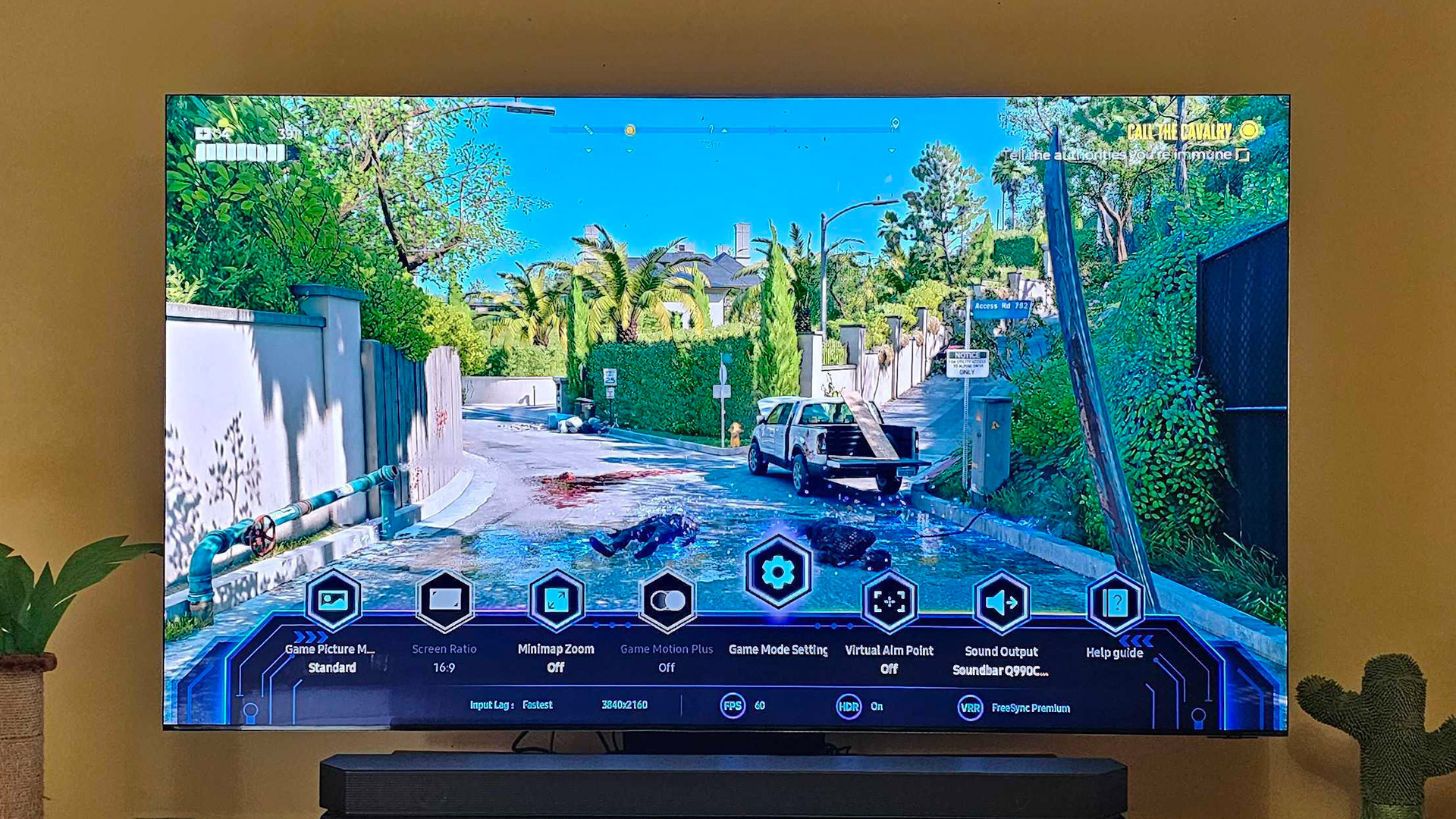
As for what else the Game Mode offers, enthusiasts are in for a treat as the QN900C brings a wealth of gamer-centrics settings to fine-tune via a pop-up menu. Here, players can cycle through a range of picture modes tailored specifically to different gaming genres (RTS, FPS, Sports, etc), as well as multiple levels of Game Motion Plus — an optional feature that smooths out gameplay with things like blur and judder reduction at a slight expense to input lag.
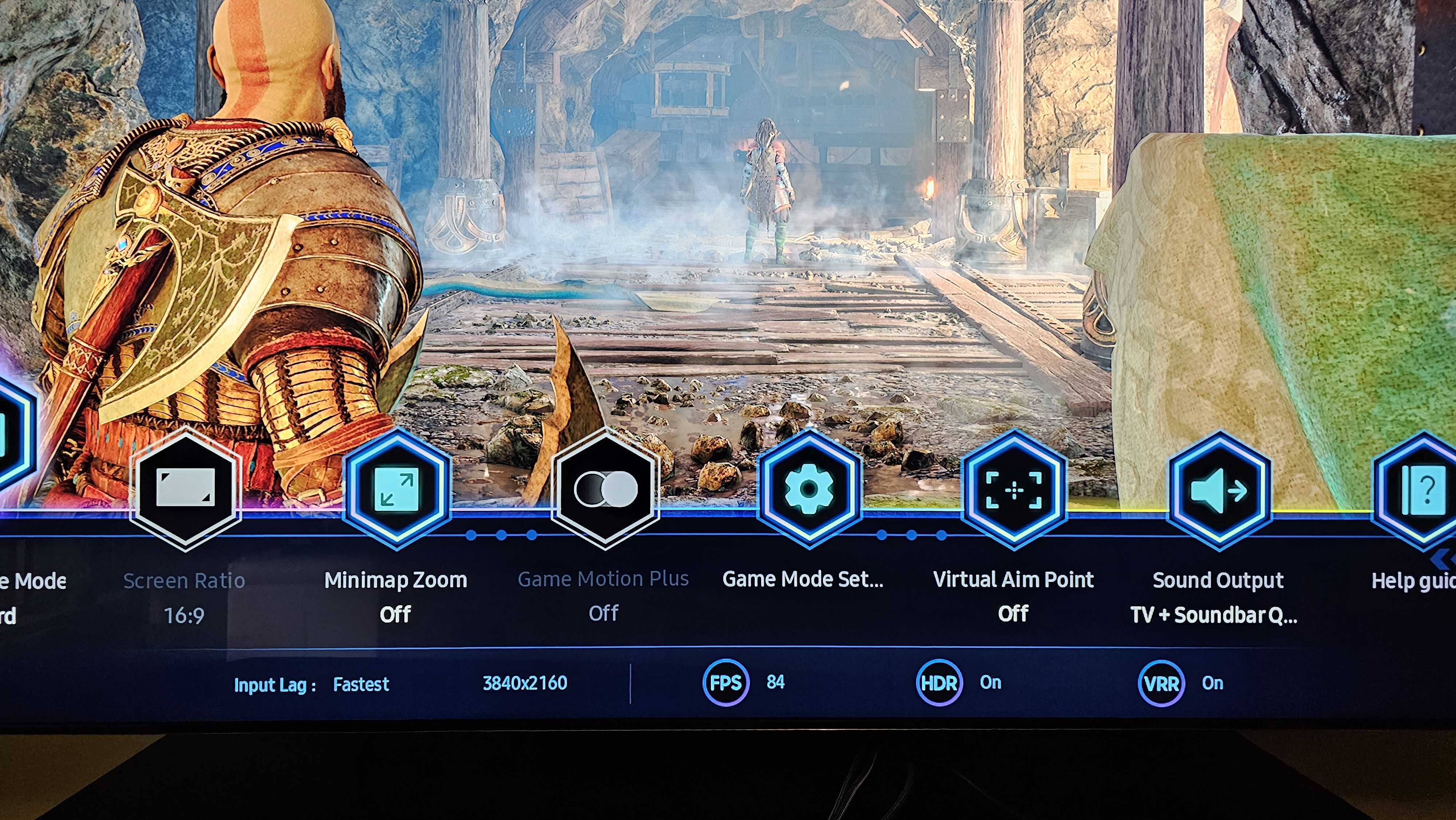
Gamers also have access to a Dynamic Black Equalizer slider, which provides a brightness and clarity boost to dark areas of the screen, making it easier to identify enemies in Call of Duty, for instance.
Additionally, Samsung has included a few other quirky settings for gamers, including an ultra-wide viewing mode for PC gamers, a Mini Map Zoom feature that lets you magnify a portion of your screen, and a Virtual Aim Point setting that places a cursor in the middle of your display.
Samsung QN900C Neo QLED 8K TV review: Interface and apps
Once again, the QN900C runs on Samsung's Tizen smart TV platform, and like last year's model, offers a home screen experience that takes up the entire display, showcasing recent shows and suggested content. Long-time Samsung users will still miss the old pop-up menu, but it seems like the platform has landed in a nice middle ground of sorts.
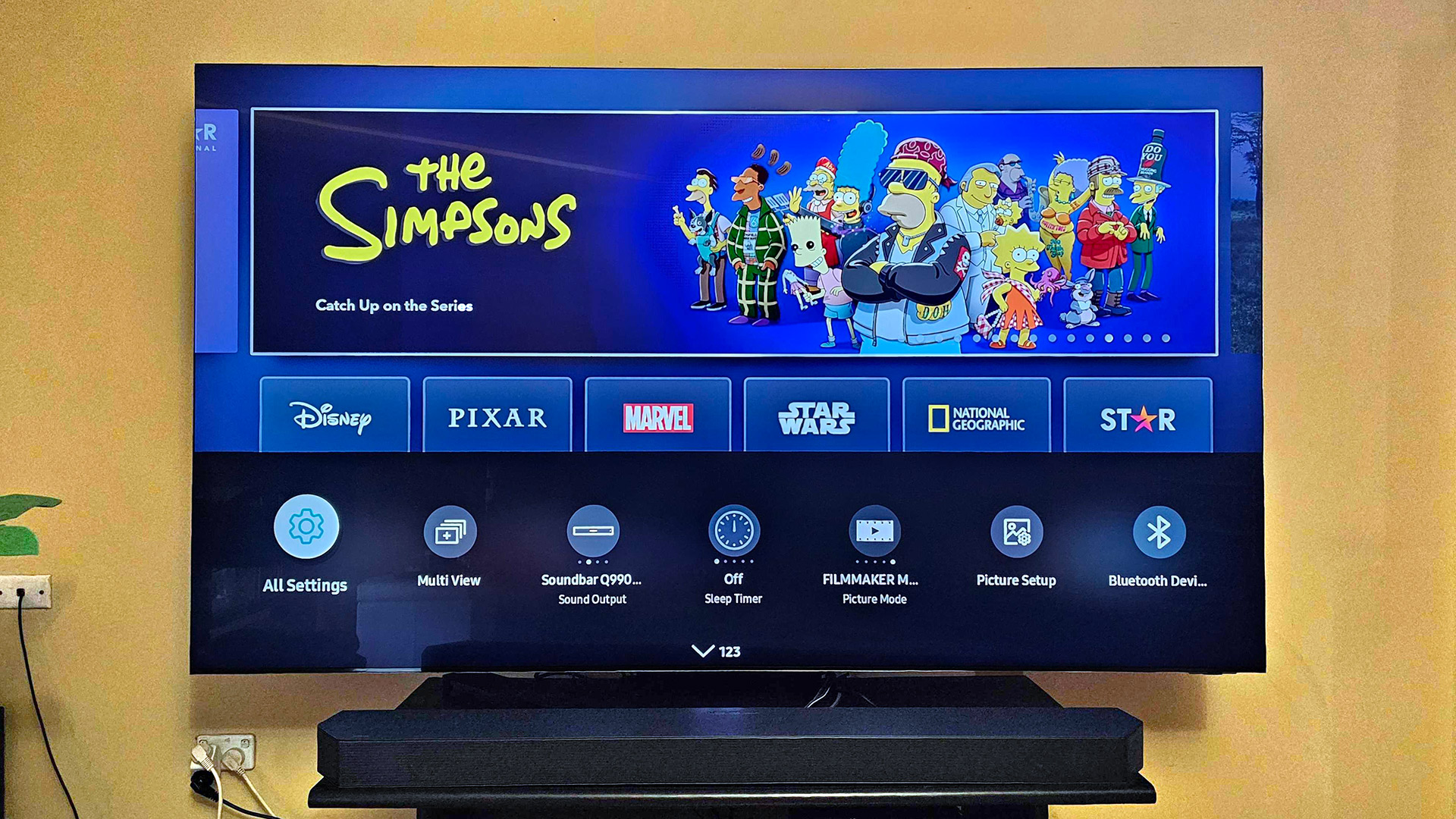
You will still need to view the full home screen to cycle through apps and switch sources, however the remote's cog button will let you launch a pop-up quick settings menu to adjust picture levels, switch viewing and sound modes, and more — all without leaving what you're watching. Of course, you will need to go into the 'All Settings' menu in order to make more advanced tweaks — you'll be able to adjust features like Contrast Enhancer, Local Dimming, HDR Tone Mapping, White Balance, Gamma and more.
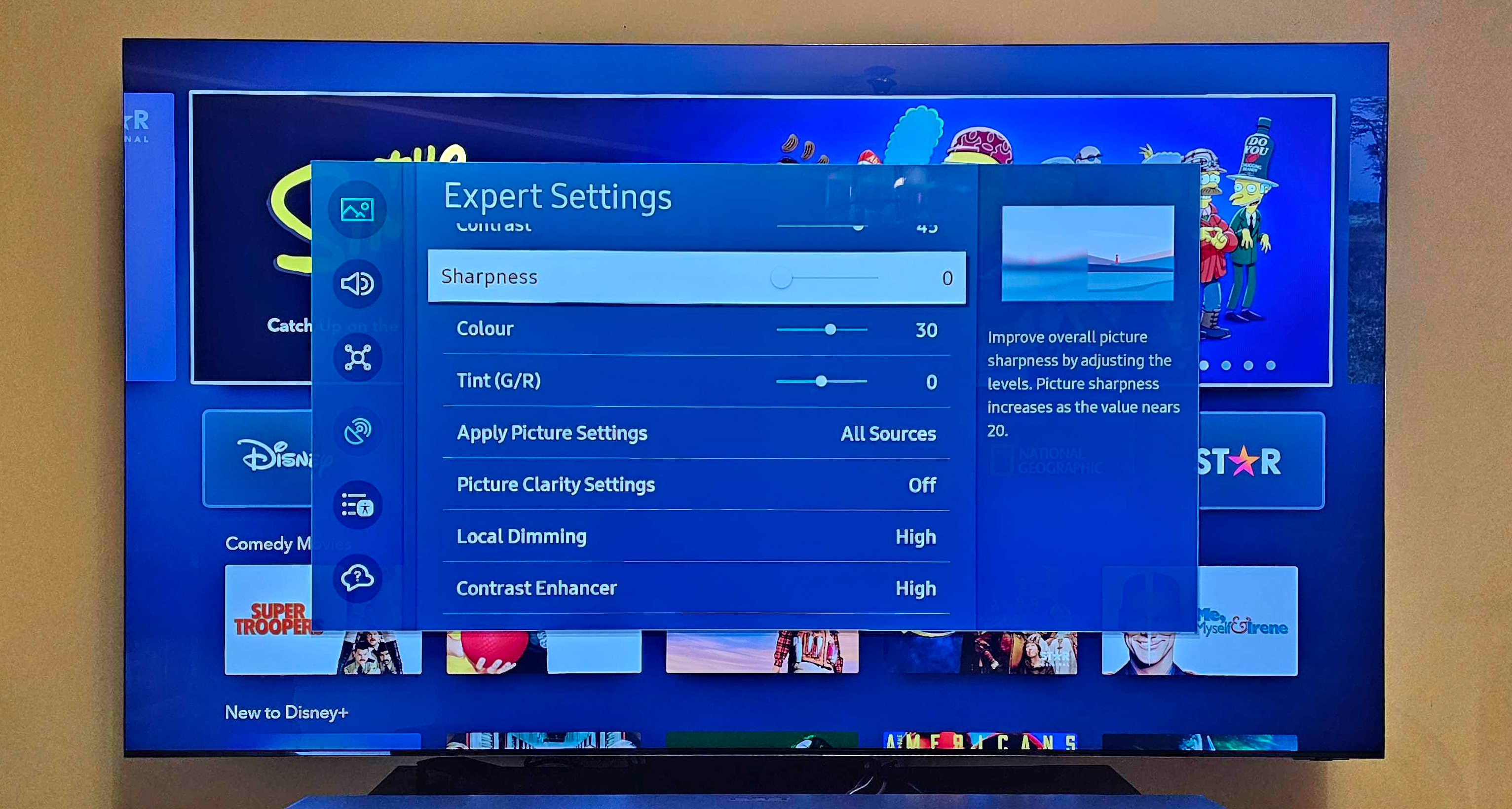
All of the usual apps are present and accounted for, with services like Netflix, Disney Plus and Prime Video coming pre-installed (which is expected, given their placement on the TV's remote). There's also a large selection of additional apps available in the TV's 'Apps' section, including TikTok, Twitch, local streaming and catchup services, and even Xbox and GeForce Now cloud gaming apps.
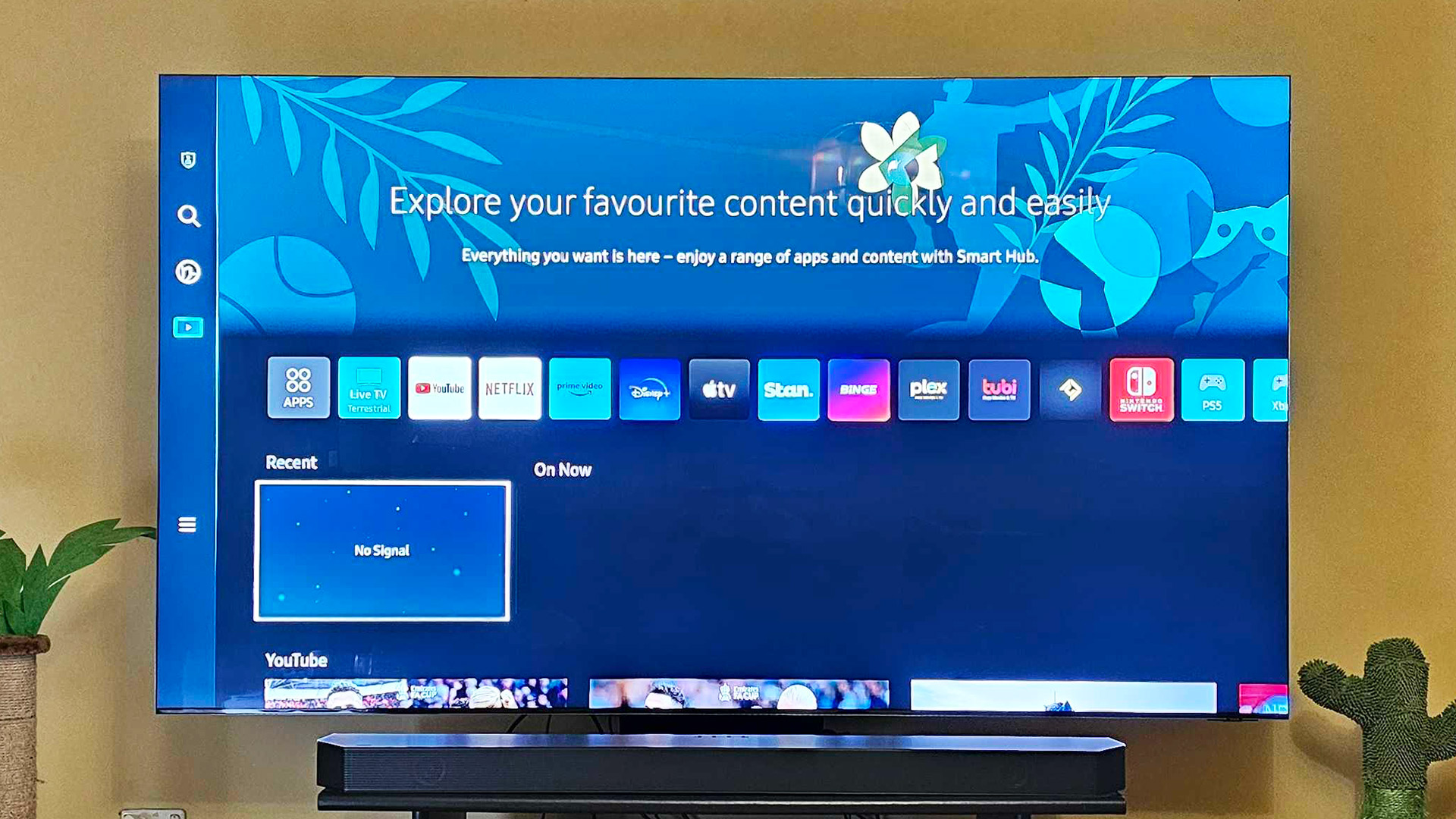
Apps for Alexa and Samsung's own Bixby voice assistant are also available, along with a dedicated SmartThings app which will allow you to control all of your connected devices.
And, like with previous models, the QN900C supports Samsung's webcam attachment (or a compatible smartphone camera) for video conferencing, specifically over Google Meet. Alternatively, the TV's Multi-View mode will let you use a camera to watch your form while you exercise — handy for following on-screen yoga tutorials. Multi-View will also let you connect your phone or laptop, so you can keep an eye on work while you goof off.
Samsung QN900C Neo QLED 8K TV review: Remote
For the third year running, Samsung brings back its excellent SolarCell One Remote, which ditches disposable batteries in favor of a small rear solar panel that absorbs light (both natural and artificial) to charge an internal battery over time. Of course, if you need a faster top-up, the remote can also be charged via a USB-C port.
Once again, Samsung takes a minimalist approach with its remote, with a selection of function and navigation buttons joined by volume and channel rockers. The big difference is that this year's remote is smaller than previous iterations, with more rounded edges for a more comfortable feel in the hand.
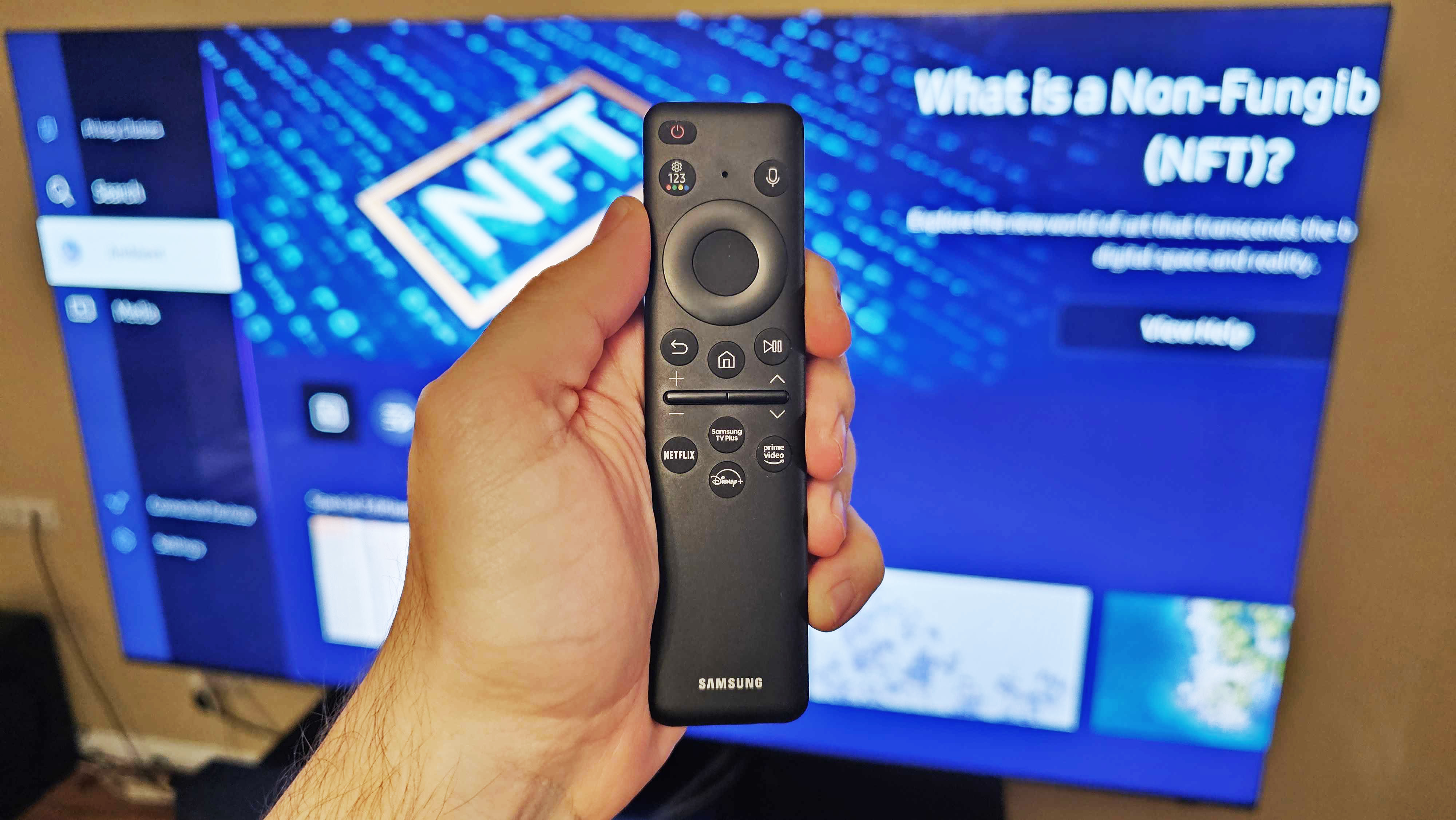
Dedicated buttons for launching Netflix, Disney Plus, Prime Video and Samsung's TV Plus app return, as well as a cog button for quick access to settings and a microphone button for voice commands.
Samsung QN900C Neo QLED 8K TV review: Verdict
Samsung's QN900C Neo QLED 8K TV is the most premium television the company has delivered to date, reaching new heights in terms of design and performance.
When it comes to functionality, the QN900C delivers pretty much everything you could ask for in a high-end TV (outside of Dolby Vision support) with excellent gaming features that make great use of its four HDMI 2.1 ports, and a thoughtful approach to smart connectivity.
It's also a great reminder of why Samsung resisted OLED technology for so long, with the QN900C's Mini LED-backed LCD display achieving comparable black levels and stunning colors without sacrificing peak brightness.
While the appearance of black crush in darker scenes is a little disappointing, it's far outweighed by everything the QN900C does right, making it one of the best 8K TVs you can buy right now.







